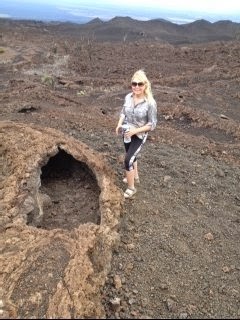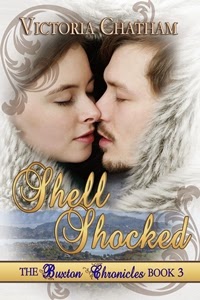“We’re going to Ecuador
and Peru,” daughter Rene announced.
I was
overwhelmed when she told me. The timing was bad. The company I’d been working
for was bought out by a larger company. I had to convince them to rehire me.
Before we left
on our trip, I was rehired, but scarcely had the time to get the shots and meds
required when one visits two third world countries. At least my passport was
up-to-date.
My traveling
companions included: Rene, her daughter Cody (my eleven-year-old granddaughter),
Rene’s bestie Dia and Dia’s daughter Michelle.
Rene rattled off
our itinerary. We’d be going to the Galapagos and Machu Picchu, but no easy way
to get there, she said.
Three days after
we left Florida, we arrived in Santa Cruz, Ecuador. All five of us slept in the
same room, and it wasn’t long before the toilet clogged.
None of us saw the
tiny sign in Spanish telling us not to put paper in the commode. We were
supposed to throw it in the trash instead. Rene speaks Spanish, but the sign was
almost invisible to the naked eye.
Rene and Dia
discovered the blocked toilet after they’d taken their Ambien. Their doctors
had prescribed the Ambien in case they had difficulty sleeping on our trip. I
don’t require a sleep aid and was peacefully dreaming when Rene poked me. “You’ll
have to pee in the shower, Mama. The toilet is stopped up. We’ve tried to
plunge it, but it’s still clogged.”
As her Ambien
took effect, Rene began to act silly. I’d seen scary reports about Ambien. Some
people have had terrible reactions after taking it. They do crazy things, like
driving a car while asleep.
Rene started playing
with the ringtones on her cellphone. “Isn’t that beautiful?”
“No, it’s loud
and annoying,” I said.
“It is not. It’s
beautiful and colorful.”
“Let’s go to
sleep and try to solve our problems,” Dia repeated three times.
Rene, who never
overeats, became ravenous. She stuffed her mouth with every snack she could
find.
I watched with
trepidation. What if she’s still hungry
after she eats the Pringles, crackers and candy? And what if she walks out into the night looking for more food?
“You need to lie
down,” I told her.
“I’ll sleep like
a baby soon,” she said, between chews.
“I’m going to
take a video of you,” I said.
“I’m told I’m
very funny.”
After what
seemed like an eternity, she did go to sleep, but sleep evaded me then, and with
the toilet clogged, I began searching for another one.
I looked everywhere, even in the hotel's basement,
which had been roped off. I was clearly trespassing when I slipped under the barrier.
I turned the
knob on the first door I saw.
It was unlocked.
I eased the door
open.
A toilet sat in
the back of a small room, no bigger than a closet. I tried to lock the door for
privacy before squatting on the pot, but I was unable to secure it. I had an
image of getting busted with my pants down.
Unlike the upcoming
adventures of our trip, I escaped unharmed. If I’d been able to see into the
future, I would have stayed in Santa Cruz despite the clogged toilet. All in
all, Santa Cruz was a lovely town with exotic birds, sea lions, giant turtles, good
restaurants and shops.
Since
I had no warning of the tribulations to come, I boarded the boat to Isla Isabella
with a smile. At first we enjoyed exploring the lava rocks on Isabella. We saw exotic
birds, penguins, iguanas and white tail sharks.
As we watched
the sharks swimming in a canal, the guide cautioned, “Don’t wake them.”
For Dia, a
photographer, this was paradise, until she lost her balance and fell. The lava rocks
sliced her shin to the bone. Our guide dressed her leg wound to stop the profuse
bleeding, but it was not a permanent fix.
We’d all planned
to go snorkeling after the rock tour, but Dia opted out. A wise decision, I
thought.
After seeing the
sharks in the canal, we didn’t want to entice them with fresh blood.
Cody announced
she was jumping in regardless. Nothing would deter her from the snorkeling
experience.
I plunged into
the frigid Pacific with her.
The guide told
us not to worry about the sharks. “They usually prefer the warm canal.”
I prayed he was
right.
As we swam
through the ocean, Cody and I found ourselves caught in a fierce current. We
thrashed our arms and kicked our flippers, trying to swim out. One of the guys
in our group kicked me in the face in his battle to free himself.
The guide yelled,
“Stay away from the stingray.”
As soon as Cody
and I were able to rise above the ocean’s surface, she said, “I’m tired.” I
was exhausted. So we swam back to the boat.
Once on dry
land, Dia’s leg looked red and infected. She needed medical attention pronto. A
doctor at the hospital stitched up her wound and prescribed antibiotics. No
charge. (Healthcare in Ecuador is free.)
 The next day, we
went hiking up Sierra Negra, elevation 4,890 feet. Sierra Negra is
a large and active volcano.
The next day, we
went hiking up Sierra Negra, elevation 4,890 feet. Sierra Negra is
a large and active volcano.
I wish I’d worn hiking boots, not sandals. (I must have
been thinking of that Bible verse: “For forty years I led you through the
wilderness, yet your clothes and sandals did not wear out.”)
In the beginning
of our hike, we walked through the rain forest, where it never stops drizzling.
“I can do this,” I told myself. I
exercise daily with Jane Fonda’s Prime Time workout. I’ve walked all over
Chicago and San Francisco with daughter Andrea. (Andrea probably would have enjoyed
this hike, I thought. She’d walked all over Panama last summer.)
Hours into the climb,
I began to question my sanity as the terrain became higher and hotter. The rocks
cut my feet. I started walking like an aging Galapagos penguin.
“This is worse
than giving birth,” I complained.
We were given no
time to rest and sightsee. Only thirty minutes for lunch.
When I sat to
catch my breath, the guide yelled, “Up, up. Don’t stop.”
“How long have you
been a guide here?” I asked him.
“Fifteen years.
I do this every day.”
“Have you ever
had anyone to quit or faint or die?”
“No,” he said.
“This is tough,”
one of the hikers said. “I’m sure he’s had someone to quit, turn around and go
back. I think it’s wrong of him to rush us along like this.”
After hours and
hours of trudging nonstop, we finally saw the volcano’s rim in the distance. “How
much longer,” I asked the guide.
“Twenty minutes,”
he replied.
It looked like a vertical climb to the rim--much
too dangerous. No bars, no restrains. Easy to fall in and die.
My feet were
burning. My whole body ached. My head was swirling from the heat and volcanic
gases. Not much bottled water left.
Dia and Michelle
had already started back down, but not Rene and Cody. They were determined to
hike to the rim.
I bid them
farewell, then looked for a trail marker to lead me out. I kept searching, but
couldn’t find a sign. On a rocky terrain, it’s difficult to detect a path.
I got horribly
lost.
I stepped on a
sticker bush. My feet and legs stung like fire.
I spotted a spider and thought it may have bitten me.
I couldn’t see
anyone from where I stood, no guide, no hikers, no Rene, no Cody. I hoisted
myself up on a giant rock to get a better view.
I spied specks
in the distance. I thought I might be hallucinating.
Then I saw
blonde and red hair.
I yelled as loud
as my dry lungs were capable of, but Rene and Cody didn’t respond.
I ran toward
them. My adrenalin and desperation had imbued me with renewed strength.
Rene finally turned
in my direction. “What happened to you, Mama?”
“Don’t ask. I
think I need a hip replacement.”
“Stretch and you’ll
be fine.”
No sympathy.
Every muscle and
joint in my body cried out in pain. I don’t know how I endured the hike back.
A couple of days
later, I felt better and could walk without aching, but in Cusco, Peru, Rene suffered.
She threw up several times. The coca tea and leaves--natural remedies used to treat
altitude sickness--didn’t work for her. Someone brought out an oxygen tank. She
inhaled the oxygen, but it provided only temporary relief.
I’d been given a
prescription for the high altitude, but the pills made me pee excessively, and
I stopped taking them. (I’ve read it’s better to take it easy for a couple of days
and avoid anything strenuous in order to adjust to high elevations, but when
you’re seeing two third world countries in sixteen days with an action-packed
schedule, resting and relaxing are impossible).
My nose bled, but it wasn’t severe enough to keep me from enjoying the spectacular vistas of Machu Picchu--the "sacred landscape" of the Inca. It sits on top of a mountain, encircled by the Urubamba River.
Machu Picchu is in the southern
hemisphere, 13.164 degrees south of the equator,
50 miles northwest of Cusco and about 7,970 feet above
mean sea level. It’s one of the most important archaeological
sites in South America.
After visiting Machu Picchu, we took a long train ride. A
taxi driver picked us up from the train and drove us back to our hotel in
Cusco.
After a night and day there, we began the long journey back
home. We had an eleven-hour layover in Ecuador, but Rene didn’t mind. She was
happy to be rid of her altitude sickness.
“I could have died on
that hike to Sierra Negra,” I told her.
“My hands were so swollen,” she said. They looked like a
giant’s.” She showed me the IPhone pictures of her hands and the volcano’s rim.
“Isn’t that amazing?”
“You and Cody could have fallen in,” I said. “There were no
restrains.”
“But we survived,” she said.
“This early Christmas gift almost killed me," I said. "I feel lucky to be alive. I’m going kiss the
ground when I get back home.”
Now that I'm here, there's no place on earth I'd rather be than at home celebrating the Christmas season. Here's wishing you the happiest of holidays, and if you're traveling, be safe.
--------------------------------------------------------------------------------
Now that I'm here, there's no place on earth I'd rather be than at home celebrating the Christmas season. Here's wishing you the happiest of holidays, and if you're traveling, be safe.
After working as a newspaper reporter, broadcaster and
columnist for many years, Sandy Semerad decided to try her hand at writing
novels. Her first novel, Mardi Gravestone has been republished as SEX, LOVE AND
MURDER. She wrote her second mystery HURRICANE HOUSE after a hurricane ripped
through her community. Her third book, romantic thriller A MESSAGE IN THE
ROSES, is loosely based on a murder trial she covered as a newspaper reporter
in Atlanta. All books have received five star reviews. Semerad is originally
from a small town in Alabama, but now lives in Santa Rosa Beach, Florida with
husband Larry, their spoiled Shih Tzu P-Nut and wayward cat Miss Kitty. She has
two daughters and a granddaughter.
www.sandysemerad.com





















.jpg)






.jpg)










